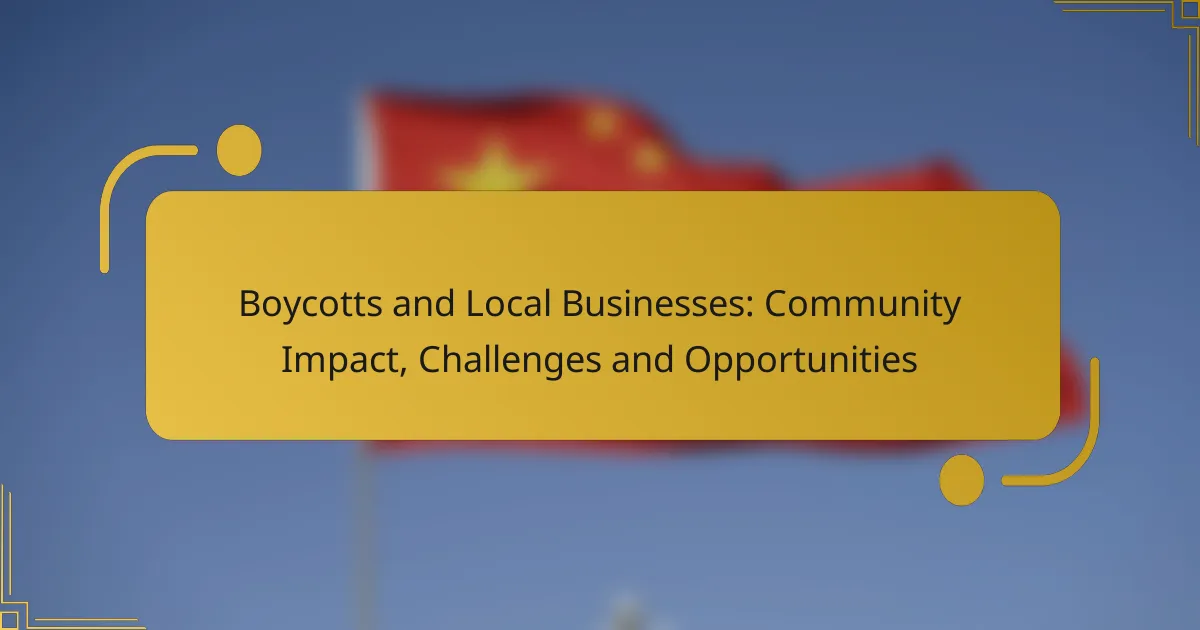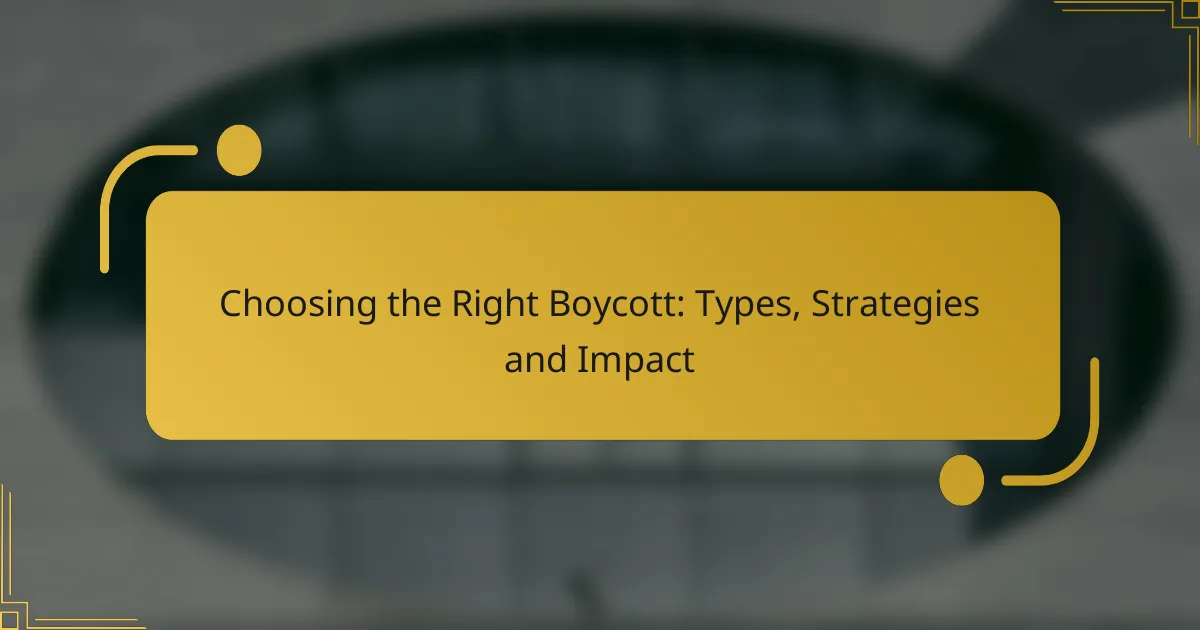Economic and social boycotts serve as powerful tools for advocating change, each with distinct strategies and objectives. While economic boycotts aim to diminish financial support for targeted entities, social boycotts focus on raising awareness and altering public perception regarding social injustices. Understanding when and how to employ each type can significantly enhance their effectiveness in driving meaningful progress.
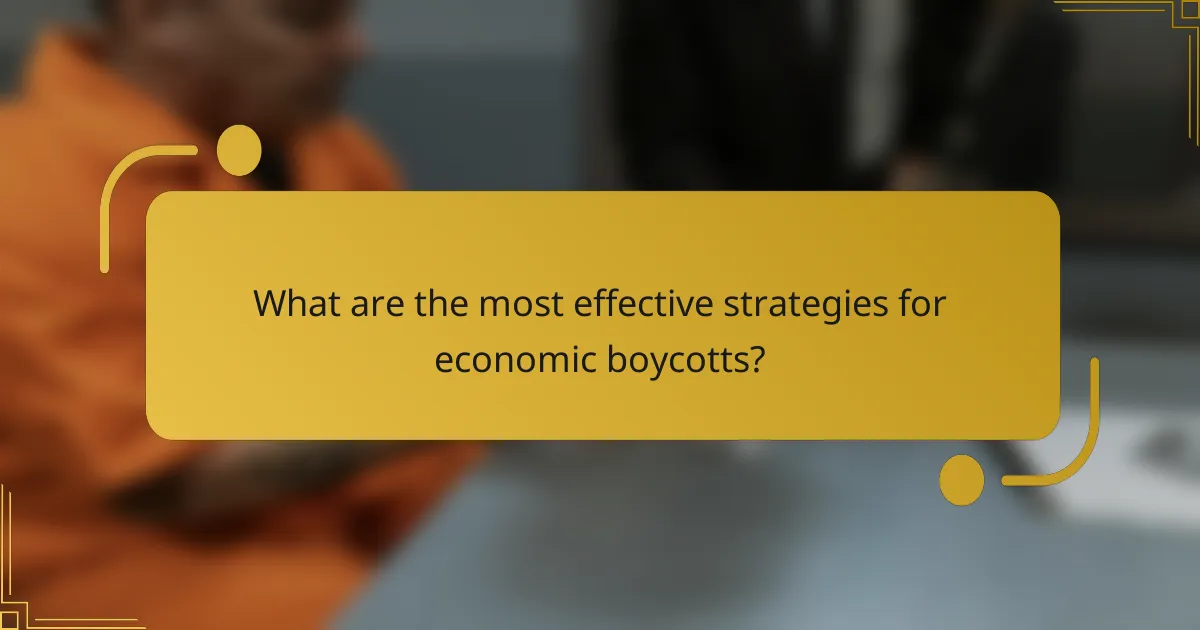
What are the most effective strategies for economic boycotts?
Effective economic boycotts focus on specific strategies that maximize impact and visibility. By targeting companies directly linked to the issue at hand, leveraging social media, and collaborating with advocacy groups, boycotts can create significant pressure for change.
Targeting specific companies
Focusing on specific companies that are directly involved in the issue allows for a more concentrated effort. Identify businesses whose practices or policies align with the cause, as this increases the likelihood of them feeling the financial impact. For example, if a company is known for unethical labor practices, targeting them can lead to a more effective boycott.
Consider the size and market influence of the company. Larger corporations may be more susceptible to public pressure due to their visibility and reliance on consumer support. A well-planned approach can lead to significant changes in their policies.
Leveraging social media campaigns
Social media is a powerful tool for amplifying the reach of economic boycotts. Creating shareable content that highlights the reasons for the boycott can engage a broader audience. Utilize platforms like Twitter, Instagram, and Facebook to spread awareness and encourage participation.
Engage influencers and activists to help promote the campaign. Their established followings can significantly increase visibility and credibility, leading to higher participation rates in the boycott.
Building coalitions with advocacy groups
Collaborating with established advocacy groups can enhance the effectiveness of a boycott. These organizations often have resources, networks, and expertise that can support the campaign. Partnering with them can also lend legitimacy to the cause.
Identify groups that share similar goals and values. Joint efforts can lead to a unified front, making it harder for targeted companies to ignore the collective demands of a larger coalition.
Setting clear goals and timelines
Defining clear goals and timelines is crucial for the success of an economic boycott. Establish specific objectives, such as policy changes or financial targets, to measure progress effectively. This clarity helps maintain focus and motivates participants.
Set realistic timelines to achieve these goals. A defined period can create urgency and prompt quicker responses from targeted companies, increasing the chances of success.
Measuring impact and adjusting tactics
Regularly measuring the impact of the boycott is essential for understanding its effectiveness. Track metrics such as sales declines, media coverage, and public sentiment to gauge progress. This data can inform whether the boycott is achieving its intended goals.
Be prepared to adjust tactics based on the results. If initial strategies are not yielding the desired impact, consider shifting focus, enhancing messaging, or exploring additional outreach methods to maintain momentum.
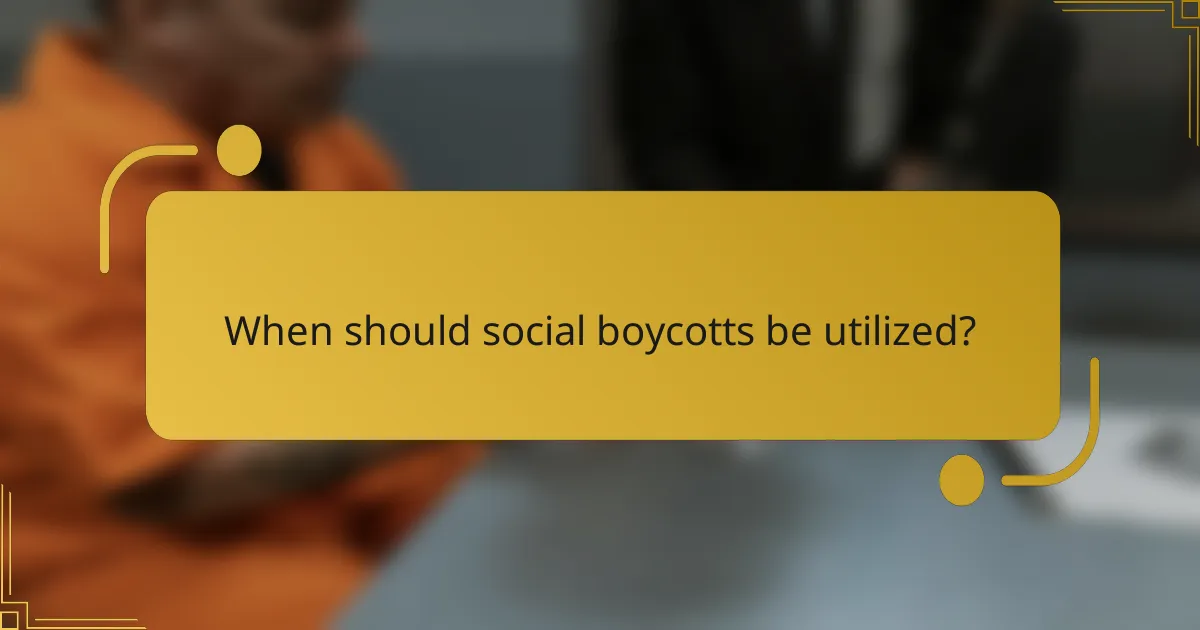
When should social boycotts be utilized?
Social boycotts should be utilized when there is a need to address social injustices or to amplify the voices of marginalized communities. These boycotts can effectively draw attention to issues that economic measures may not adequately address.
In response to social injustices
Social boycotts are particularly effective in response to clear social injustices, such as discrimination or human rights violations. By refusing to support organizations or entities that perpetuate these injustices, activists can pressure them to change their practices.
For example, a boycott against a company known for discriminatory hiring practices can compel that company to adopt more equitable policies. This form of protest highlights the moral implications of their actions and can lead to significant changes in behavior.
To raise awareness for marginalized communities
Social boycotts can serve as powerful tools to raise awareness for marginalized communities that often lack visibility. By targeting businesses or events that ignore or exploit these groups, boycotters can shine a light on their struggles.
For instance, boycotting a festival that fails to include diverse representation can encourage organizers to prioritize inclusivity in future events. This strategy not only raises awareness but also fosters community solidarity and support.
When economic boycotts lack effectiveness
Economic boycotts may not always yield the desired results, particularly when the target entity is financially stable or when consumers have limited alternatives. In such cases, social boycotts can provide a more impactful approach to instigate change.
For example, if a large corporation is unaffected by a loss of sales due to its market dominance, a social boycott can create public pressure that economic measures alone cannot achieve. This shift in strategy can mobilize public sentiment and lead to broader societal change.

How do economic and social boycotts compare in effectiveness?
Economic boycotts typically focus on reducing a target’s financial resources, while social boycotts aim to alter public perception and behavior. The effectiveness of each type often depends on the specific goals of the movement and the context in which they are applied.
Economic boycotts impact financial performance
Economic boycotts directly affect a company’s revenue by encouraging consumers to refrain from purchasing its products or services. For instance, a significant decline in sales can lead to layoffs, reduced investments, and even bankruptcy if the boycott is sustained over time.
To maximize impact, organizers should target companies with high visibility and significant market share. A well-coordinated economic boycott can lead to substantial financial losses, often quantified in tens of millions of dollars, depending on the company’s size and the boycott’s duration.
Social boycotts influence public perception
Social boycotts aim to shift public opinion by highlighting ethical concerns or social injustices associated with a company or organization. These boycotts can lead to reputational damage, which may affect customer loyalty and brand image.
For example, a social boycott may arise in response to a company’s labor practices or environmental policies. The long-term effects can be profound, as negative publicity can deter potential customers and partners, leading to a decline in market position.
Long-term vs. short-term effects
Economic boycotts often yield immediate financial consequences, but their long-term effectiveness can vary. If a company adapts its practices in response to consumer pressure, the boycott may lead to lasting change. However, if the company remains unresponsive, the boycott could fizzle out without achieving its goals.
In contrast, social boycotts may take longer to manifest tangible results but can create enduring shifts in public consciousness. Over time, sustained social pressure can lead to policy changes and improved practices, as companies seek to align with consumer values. Balancing both types of boycotts can enhance overall effectiveness, depending on the situation.
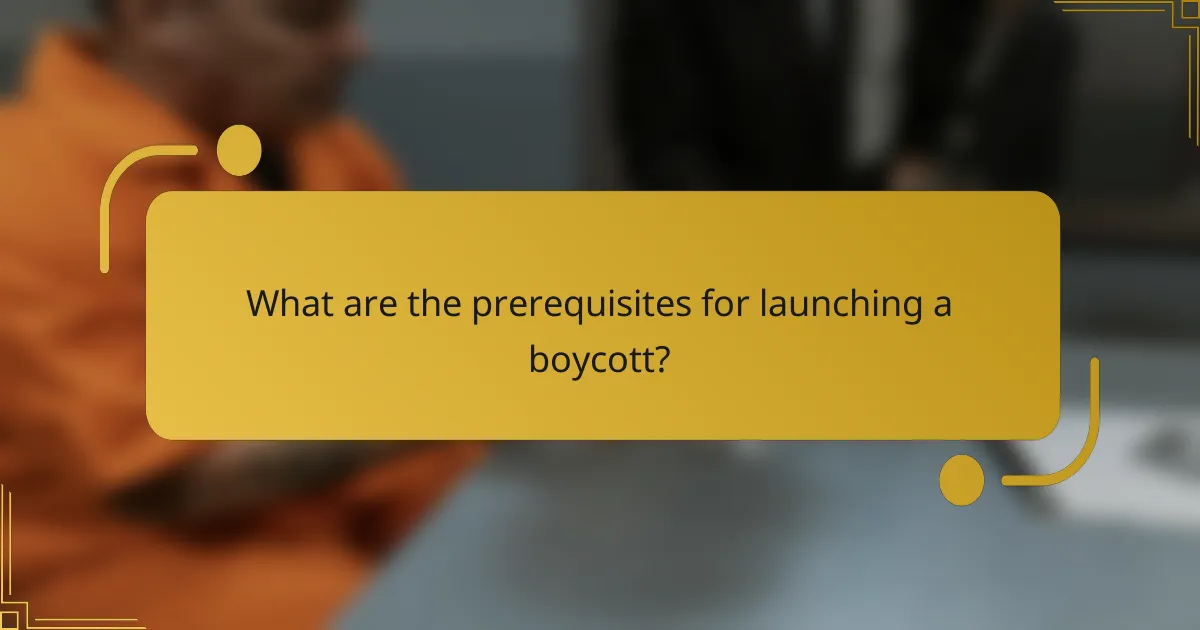
What are the prerequisites for launching a boycott?
Launching a boycott requires careful planning and consideration of several key factors. Understanding the target entity, gathering community support, and establishing clear messaging are essential steps to ensure the boycott’s effectiveness.
Understanding the target entity
Before initiating a boycott, it’s crucial to thoroughly understand the target entity, whether it’s a corporation, government, or individual. Research their practices, policies, and public perception to identify specific issues that resonate with potential supporters.
Consider the target’s market influence and vulnerabilities. For instance, a large corporation may be more susceptible to consumer boycotts than a small local business. Knowing the target’s weaknesses can help in strategizing the boycott’s approach.
Gathering community support
Community support is vital for a successful boycott. Engage with local organizations, activist groups, and social media platforms to build a coalition of supporters who share the same goals. This collective effort amplifies the message and increases pressure on the target entity.
Utilize outreach methods such as public meetings, social media campaigns, and informational flyers to raise awareness. The more people involved, the greater the potential impact, so aim for broad participation across diverse demographics.
Establishing clear messaging
Clear messaging is essential for conveying the purpose and goals of the boycott. Develop concise, compelling statements that outline the reasons for the boycott and the desired outcomes. This messaging should resonate emotionally with supporters and clearly articulate the issues at stake.
Consider creating visual materials, such as logos or infographics, to enhance recognition and understanding. Consistent messaging across all platforms helps maintain focus and unity among supporters, making the boycott more effective.
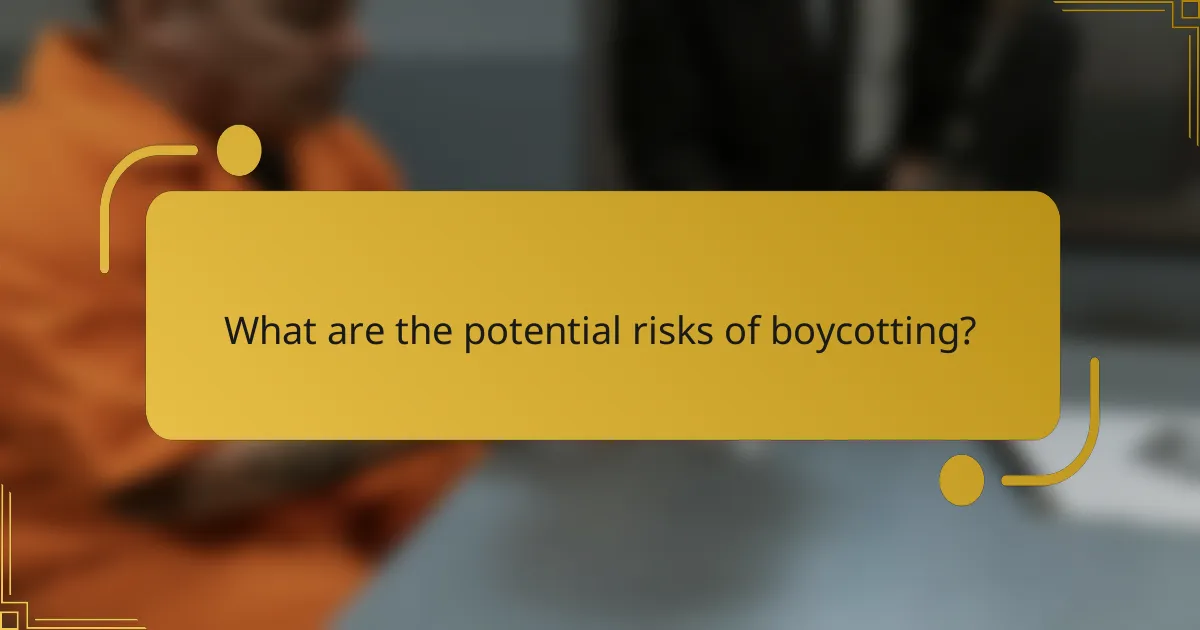
What are the potential risks of boycotting?
Boycotting can lead to various risks that may undermine its intended impact. These risks include backlash from supporters of the targeted entity, unintended consequences for workers, and potential legal implications.
Backlash from supporters of the target
Boycotts can provoke strong reactions from those who support the targeted organization or individual. This backlash may manifest as public protests, social media campaigns, or even counter-boycotts, which can escalate tensions and polarize communities.
Supporters may argue that the boycott is unjustified, leading to a defensive stance from the target. This can create a hostile environment, making it difficult for the boycotting group to maintain focus on their objectives.
Unintended consequences for workers
While boycotts aim to pressure organizations, they can inadvertently harm workers who rely on the targeted entity for their livelihoods. Employees may face layoffs or reduced hours as a direct result of decreased sales or negative publicity stemming from the boycott.
In some cases, workers may not share the same views as the boycotters, leading to a disconnect between the goals of the boycott and the realities faced by those employed by the target. This can create moral dilemmas for participants in the boycott.
Legal implications
Engaging in a boycott can carry legal risks, particularly if it is perceived as anti-competitive or discriminatory. In some jurisdictions, laws may prohibit certain types of boycotts, especially those that target specific groups or industries.
It’s essential to understand local regulations before initiating a boycott. Consulting legal experts can help ensure that the boycott does not violate any laws, which could lead to lawsuits or penalties for the organizers.

